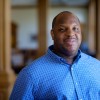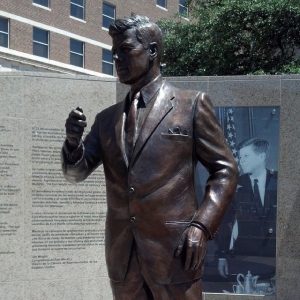This article is more than 5 years old.
The 29th annual NASIG Conference was held this year from May 1-4, and it was one of the most exciting and thought-provoking conferences I’ve attended in several years. There was a great sense of enthusiasm from members of the group during sessions as well as social events, whether they were first time attendees or more seasoned attendees. This was also my first conference as a committee member. I’ve served for the last few months on the Communications and Marketing Committee (formerly the Electronic Communications Committee), and it has been a privilege to serve the greater organization while increasing my own knowledge. In addition, this has been an opportunity to see the inner workings of one level of the organization, and it has been a pleasure to work with professionals who aren’t afraid to take a newbie like me under their wing.
The vision sessions featured three leading professionals both in and outside the field, who spoke about the Big Idea while keeping their thoughts grounded in an approachable reality. On Friday, Dr. Katherine Skinner (Executive Director, Educopia Institute) spoke about “Critical Moments: Chance, Choice and Change in Scholarly Publishing”. Dr. Skinner took a sociological-cultural approach to the history of scholarly publishing as it has moved from the pioneer settlements of the print environment to the infrastructure of a megalopolis in the 21st century for online connectivity. Dr. Herbert Van de Sompel (Prototyping Team Leader, Research Library of the Los Alamos National Laboratory) gave a talk on Saturday morning on the topic “From a System of Journals to a Web of Objects”. Dr. Van de Sompel’s talk contained both words of warning as well as a call to action about the disappearance of scholarly articles and resources from the digital realm. Alarmingly, this includes “reference rot” and content drift, which are items that cannot be countered by current web crawling technology and sites like the Internet Archive aren’t scoped to capture. Finally, Jenica Rogers (Director of Libraries, State University of New York at Potsdam) presented on “Reaching New Horizons: Gathering the Resources Librarians Need to Make Hard Decisions” on Sunday. Ms. Rogers, notable for pulling her library out of the American Chemical Society’s journal package almost two years ago, shared her thoughts and experiences about the difficult decisions that can be made in the profession and the undergirding that should be done before taking the first few steps. One observation she made about building resources stuck with me: “There’s no such thing as too early, but too late is real”.
I also had three takeaways from the conference that had great possibilities:
- Licensing, licensing, licensing. This was a particular area of interest to me, as the skillset for licensing becomes even more important for continuing resources. I attended two valuable sessions about the licensing lifecycle and license negotiation, and as one new-to-the-craft it was helpful for me to learn not only about the pitfalls of licenses but also the successes that libraries have registered. All of this has energized me in my day to day work, and I look forward to the next challenge.
- The ORCID identifier. ORCID is an emerging community: a registry to link researchers and their work with a unique identification number that can be linked to publications, presentations, and other scholarly output. Molly touched on it from her blog from Midwinter 2014, and it’s interesting that several institutions have jumped on board with the concept, assigning IDs to faculty, grad students and other researchers as a method to receive credit for their work, especially in circumstances when a variant of an author’s name is used on a particular work.
- Memento for Chrome. During his talk, Dr. Van de Sompel mentioned a new extension for Google Chrome called Memento that his team at Los Alamos had been working on along with developers from other institutions. When installed, Memento allows one to go back into the history of a webpage via the Internet Archive’s Wayback Machine with a right click. You can learn more about Memento and download it here.
Finally, this year’s conference hotel, the Hilton Fort Worth, occupies an important place in American history. In November 1963, this hotel was known as the Hotel Texas, and President John F. Kennedy stayed there for two days before he took his fateful flight to Dallas. A small memorial, the JFK Tribute, is adjacent to the hotel with an eight foot statue of President Kennedy at its center.


3 Comments on ‘Chris at NASIG 2014’
So glad to see you energized, Chris!
Thanks for sharing Chris. Sounds like you had a great time.
Chris, thanks for the excellent write-up! I’m going to check out the “Memento” plugin!